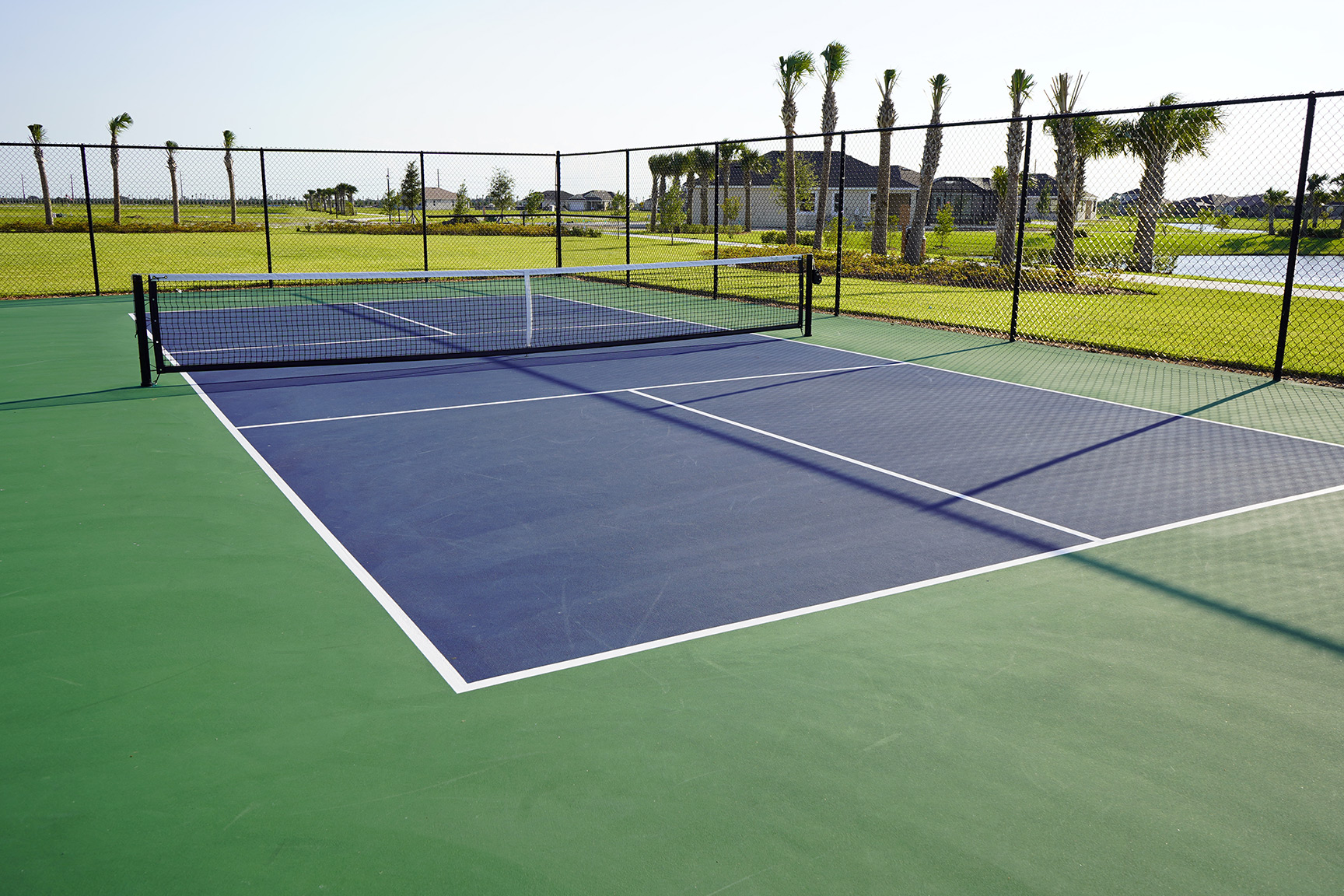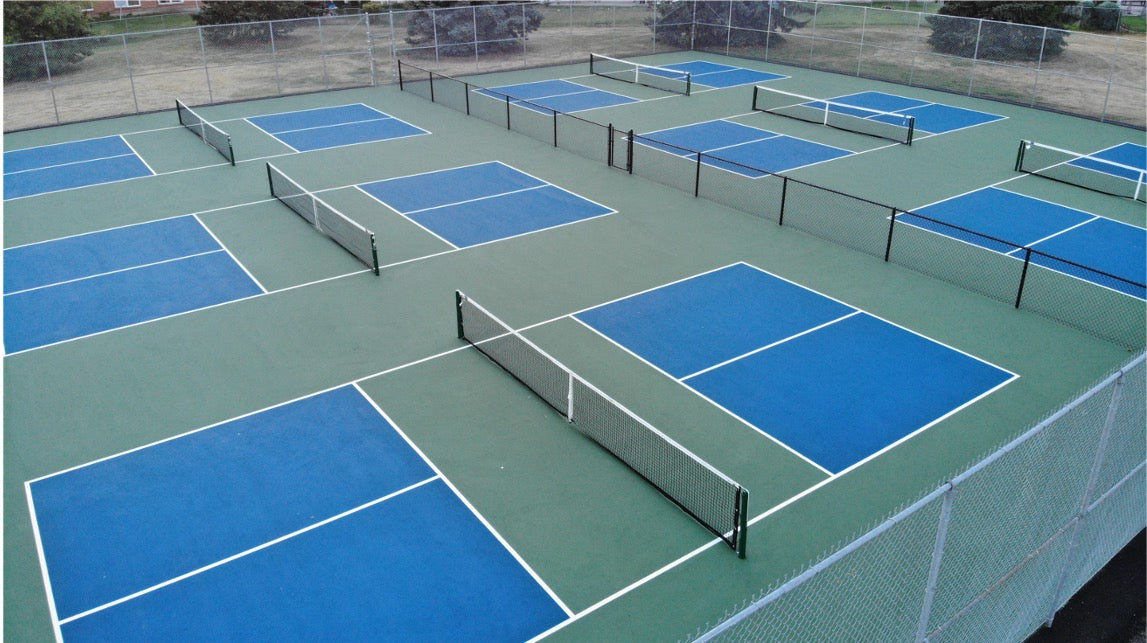Budgeting Tips for Affordable Pickleball Court Construction and Maintenance
Budgeting Tips for Affordable Pickleball Court Construction and Maintenance
Blog Article
Navigating Rules for Pickleball Court Building And Construction in Your Location
Building a pickleball court in your area needs a nuanced understanding of different regional laws, including zoning legislations, structure authorizations, and safety standards. Each community enforces certain standards that can dramatically affect the expediency of your project. Engaging with local authorities and the community is important for ensuring compliance and promoting support. Navigating this regulative landscape can be lengthy and intricate. What are the vital steps you should take into consideration to prevent possible mistakes and make certain a smooth building procedure?
Understanding Regional Zoning Regulations
When considering the building of a pickleball court, comprehending neighborhood zoning regulations is essential to making sure conformity and avoiding prospective legal problems. Zoning laws determine how land can be used and typically consist of requirements relevant to recreational facilities. These regulations can differ considerably by community, influencing factors such as court placement, lights, size, and sound levels.
Before initiating building, it is vital to consult the local zoning board or planning division to ascertain the details laws that use to your building. Specific zones may limit entertainment activities, while others might need certain licenses or adherence to particular standards. It is additionally crucial to think about problems, which determine just how far structures have to be from building lines or various other buildings.
In addition, personal developments, such as homeowner organizations (HOAs), may enforce their own rules regarding the building and use of pickleball courts. Recognizing these guidelines can avoid pricey adjustments or litigation down the line. Involving with local stakeholders and area members can give useful insights and foster assistance for your project, making certain that it straightens with the neighborhood's expectations and demands.
Getting Necessary Building Allows
How does one browse the intricacies of acquiring required structure permits for a pickleball court? Normally, you will certainly need to submit an in-depth website strategy that lays out the proposed court dimensions, materials, and design.

When licenses are gotten, it is essential to stick to any kind of evaluation schedules and requirements throughout the building stage. Maintaining communication with local authorities will certainly promote a smoother approval process and assistance prevent potential problems. By extensively preparing and comprehending the allowing landscape, you can efficiently browse the intricacies associated with building a pickleball court while continuing to be compliant with all regional guidelines.

Assessing Environmental Effect
When intending the building of a pickleball court,A thorough assessment of ecological influence is vital (Pickleball court construction). This analysis helps recognize prospective results on local ecological communities, water resources, and neighborhood visual appeals. Secret factors to think about consist of website selection-- guaranteeing that the court is not developed on environmentally sensitive land, such as wetlands or habitats for threatened varieties
Dirt stability and drainage patterns ought to be assessed to prevent disintegration and water merging, which can negatively affect surrounding plants and wild animals. Furthermore, the choice of materials is important; deciding for sustainable and environment-friendly options minimizes environmental harm.
The application of efficient stormwater administration methods is another essential facet, as it aids mitigate drainage and sedimentation. Involving with neighborhood ecological companies can supply useful view publisher site insights into policies and best practices specific to your location.
Last but not least, neighborhood input can be helpful in recognizing any type of regional environmental concerns and fostering assistance for the job. By carrying out a complete environmental impact assessment, stakeholders can ensure that pickleball court building aligns with lasting methods and contributes positively to the area's environmental health and wellness.
Complying With Safety And Security Specifications
Guaranteeing compliance with safety and security requirements is essential for the successful building and construction and operation of a pickleball court. Following well established safety laws reduces the risk of mishaps and injuries, making certain a protected setting for players.
Secret safety criteria include appropriate court dimensions, surface area products, and illumination needs. The court should fulfill the official dimensions of 20 feet vast by 44 feet long for doubles play, with proper buffer zones to prevent injuries from errant rounds. Pickleball court construction. The surface must be created from non-slip materials to improve grip and decrease the chance of falls
Additionally, lighting needs to suffice for evening play, supplying consistent illumination to avoid darkness that can prevent visibility. Regional building regulations might also dictate certain needs for secure fencing and net height to make sure gamer safety and prevent unauthorized accessibility to the court area.
Regular examinations and upkeep are important to support these criteria over time. By prioritizing security conformity, court proprietors not just shield players but also promote a positive track record within the area. This dedication to safety and security can urge greater involvement and pleasure of the sporting activity, eventually adding to its development and sustainability.

Engaging the Area in Planning
Neighborhood participation in the planning stages of other pickleball court building can dramatically enhance the project's general success. Involving neighborhood residents and stakeholders fosters a sense of ownership and motivates joint decision-making, which can bring about broader support for the initiative.
To successfully include the area, coordinators need to launch public meetings or workshops, providing a platform for locals to voice their viewpoints and preferences concerning place, layout, and amenities. Surveys and feedback forms can also be utilized to gather understandings from a bigger target market, making certain that varied viewpoints are taken into consideration.
Additionally, developing a neighborhood board of advisers can facilitate recurring discussions and address concerns throughout the planning procedure. This board can consist of agents from different demographics, such as regional schools, recreational companies, and neighborhood watch, thus enhancing community depiction.
Efficient communication is key; updates concerning the task must be on a regular basis shared by means of newsletters, social media, or neighborhood publications. By prioritizing area interaction, planners can cultivate excitement, reduce potential resistance, and produce a pickleball center that genuinely resonates with neighborhood values and demands. This collective method not just enhances the task however also reinforces community connections.
Final Thought
In conclusion, browsing the complexities of pickleball court building necessitates a detailed understanding of neighborhood guidelines, consisting of zoning laws, building licenses, and security criteria. By sticking to these standards and cultivating collaboration, successful implementation of pickleball courts can be accomplished, promoting leisure chances and community health.
Creating a pickleball court in your location calls for a nuanced understanding of numerous neighborhood laws, consisting of zoning laws, structure authorizations, and safety and security standards.When considering the construction of a pickleball court, understanding local zoning laws is essential to guaranteeing compliance and avoiding potential lawful concerns. By extensively preparing and comprehending the permitting landscape, you can effectively navigate the intricacies entailed in building a pickleball court while staying compliant with all local laws.
In verdict, browsing the complexities of pickleball court construction demands a detailed understanding of regional policies, consisting of zoning regulations, building permits, and safety and security criteria. By adhering to these guidelines and cultivating partnership, successful execution of pickleball courts can be see this here attained, advertising leisure opportunities and area health.
Report this page